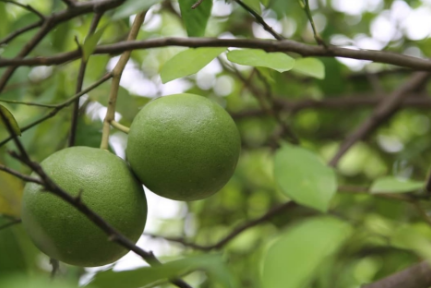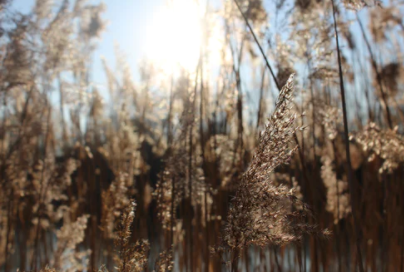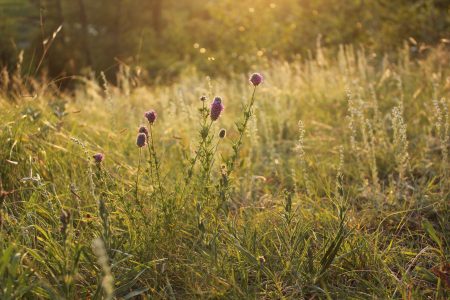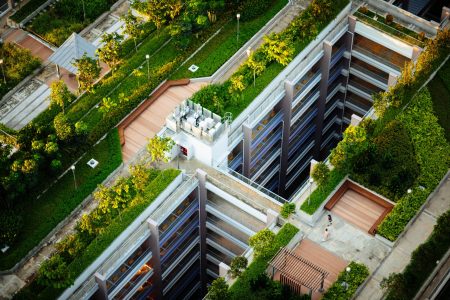Liberty Market forest: an urban forest in Pakistan

A densely planted urban forest in the centre of the second-largest city in Pakistan has been designed to be inclusive of marginalised local people, creating a safe place to socialise, enjoy nature and harvest fruit. In just two years the mini forest has become a haven for biodiversity, as well as filtering air pollution and counteracting the urban heat island effect. The project is hoped to be a model for a national rollout of such Miyawaki forests.
Long read by Yasmeen Arif
In December 2019, an urban forest was planted in the park of Liberty Market, Lahore, Pakistan. The result of a public-private partnership between Lahore Development Authority and Restore Green , funded by Izhar-Monnoo Developers and supported by Afforestation Lahore, the Liberty Market forest consists of more than 10,000 trees, densely planted across one acre in a vibrant shopping and commercial district.
The Liberty Market forest is an innovative nature-based solution in Lahore, which had the world’s second highest levels of air pollution in winter 2019 . While the city has traditionally been famous for its green spaces, and was known as the ‘City of Gardens’, urban development in the last thirty years has reduced tree cover in the city by 75%. Accompanying the loss of green space has been an increase in air pollution, higher temperatures related to the urban heat island effect, and a loss in biodiversity. Other green spaces in the city tend towards the ornamental, with high-maintenance floral displays and non-native species of tree in green spaces that are largely inaccessible to passers-by.
The Liberty Market forest represents an entirely different kind of green space. The forest creators, Restore Green, follow the methodology of ecological engineer Akira Miyawaki, who emphasises the exclusive use of native species of vegetation for restoring forested areas. Restore Green’s CEO and founder, Bilal Chaudri, carried out surveys of potential natural vegetation (PNV) in the local area to determine what species of plant would thrive in the forest. Muslim and Christian graveyards, alongside Sikh sacred groves, proved particularly useful areas for surveying long-established vegetation, since religious feeling meant that such sites are rarely disturbed by developers. Following the vegetation surveys, Chaudri planned the forest to include 52 species of tree, densely planted with three saplings per square metre in carefully-prepared and mulched s

Tree species planted in Liberty Market’s forest include neem, sukhchain, shahtoot, peepal and many more. Around ninety per cent of the trees planted have traditional medicinal or nutritional use in South Asia, and are still used in Ayurvedic and Yunani Hikmat systems of medicine – for example, neem is widely used for skin and hair. Many of the trees have significant symbolic value for religious communities in South Asia, such as the peepal tree which is associated with the Buddha. While the forest is currently protected with barriers to prevent damage to the young saplings, the barriers will be removed once the trees are sufficiently established, so that visitors to the forest will be able to interact with the trees and harvest fruit and leaves for use.
Since the forest’s plantation, birds, insects and flora have been observed in the forest. The dense plantation of the forest has been designed to encourage fast growth and multi-layer stacking, with trees and shrubs of different heights and densities. The dense plantation provides habitats for a wide range of species, while the fruit and vegetation offer stable sources of food. The first new inhabitants of the site were noticed soon after the forest’s planting in December 2019, when Chaudri recorded fungi growing on the soil under the protective mulch and noticed Asian ladybugs working actively on the saplings. As the forest matured, increased numbers of pollinators such as bees and different types of butterflies have been seen in the forest, as well as greater numbers of birds. One of the most exciting recent sights was the lesser gold-backed woodpecker.
As well as providing a safe habitat for animals, the forest has been designed to enable interaction between human visitors and the trees. Architects Nabeel Imtiaz and Omar Naeem designed the site to allow for walkways through the forest, so that visitors can experience being surrounded on all sides by the trees. Fruit trees, including mango, pomegranate, guava, pomelo, and lemon are planted on the edge of the walkways, and once the trees are mature, this fruit will be freely available to visitors to the forest. Knowing that the experience of public space is never gender-neutral, and that other public spaces in Lahore are often experienced as unwelcoming to women, Imtiaz and Naeem drew on Jane Jacobs’ concept of ‘eyes on the street’ in designing walkways that are visually open, allowing for sight lines without active policing. The short, wide pathways are more welcoming to visitors in wheelchairs or prams, and to visitors with household or caring responsibilities. The paths lead to larger communal spaces, where people can gather under the shade of the trees.

Knowing that urban design often overlooks the needs of marginalised users of space, the forest was designed to ensure that it did not disrupt the way that local people used the park. From the top of a nearby building, the designers mapped the circulatory routes of pedestrians in the park, a large number of whom are low-waged shop workers, street vendors and rickshaw drivers. Mapping the routes that these everyday users of the space created, Imtiaz and Naeem drew desired pathways across the forest that would enabled interactions with the forest while not interrupting the way the space was already utilised. After the first section of the forest had been planted, Imtiaz noted that the planned area for the next section would overtake a space where street vendors would sit when selling fruit, and redrew the planned borders to leave this area free for use. Recently, a houseless family have made their home in a container by the forest.
Liberty forest has the potential to act as a nature-based solution to some of the ecological issues facing Lahore. Alongside the increased biodiversity in flora and fauna observed in the forest, the multi-layered canopies of foliage enable the filtering of particulate matter from the air in this high-traffic and polluted commercial centre. The dense forest also creates a localised cooling effect, counteracting the urban heat island effect observed across Lahore as the result of concretised urban sprawl. Although temperature readings from the height of summer have yet to be taken in the fully-grown Liberty Market forest, a comparable forest planted by Restore Green with the same methodology showed a temperature differential of around ten degrees Celsius last year.
The growth and survival rate of the forest has been remarkable. More than 95% of the saplings planted in December 2019 have survived, and from an average height of three feet at plantation, the tallest trees are now between twenty and twenty-five feet in height. Chaudri attributes this success to the preparation of the soil, careful selection of species and the ongoing attention and care while the trees have established themselves; he confidently expects that once the forest is about three years old it will be fully sustainable, and require no more maintenance while regenerating itself.
The success of the Liberty Market forest has attracted attention from Pakistan’s national government, and the Prime Minister Imran Khan has cited Liberty Market as the pilot for a nationwide rollout of ‘Miyawaki forests’. Specialists in Akira Miyawaki’s afforestation method, however, have been disappointed to note that the first sites show little evidence of the hallmark methodologies of soil preparation, species selection and layering, and site maintenance. Without these practices, the success of these new forests is doubtful.




